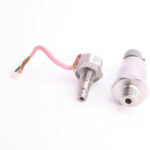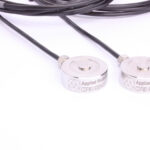According to the dictionary, resolution is defined as the act or process of separating into parts. So, for example, if you take a standard office ruler, the divisions are in millimetres and centimetres, and the best “resolution” is 1 millimetre.
This leads us to the old question: “How long is a piece of string?”.
The length of a piece of a string depends on what is used to measure it – in this case, a ruler. And the resolution of this measurement depends on the accuracy of the ruler used. The resolution on the string itself is theoretically infinite or limitless.
However, it is important to get the right relationship between what you are measuring and the measuring device. For example, if you want to measure the length of a bridge, you don’t arrive with a vernier gauge that can measure down to a hundredth of a millimetre. And, similarly, if you want to measure something very small in size, you don’t use a ten-metre measuring tape.
Lastly, it is very important to differentiate between resolution and accuracy. Your ruler may have a very high resolution but if, for example, the string changes length due to temperature variation this will show up on the measuring device (ruler) as an error.
It is therefore very important to determine the accuracy of the string and the accuracy of your measuring device in order to establish the total accuracy and to choose a resolution that makes sense.
What is Sensor resolution?
So what does this mean in relation to a sensor? Most sensors give an analogue signal output, which in theory has an infinite or limitless resolution. The resolution itself is derived from the electronic equipment that measures the signal from the sensor, ie a voltmeter.
It is important to determine accuracy, especially with pressure sensors. There are many factors that influence the output signal (linearity, hysteresis, repeatability, temperature effects etc), all of which depend on how the sensor is used.
So when choosing a resolution you can have as many divisions as you want. But if you require stable readings or a specific level of accuracy, you need to consult the accuracy specifications for that sensor.
Read more: Index to all of our Technical Notes on Pressure
Want to discuss your sensor’s resolution? Let us call you…
Why Us?
- Suppliers of top quality strain gauge sensors and transducers to every corner of industry – UK and worldwide
- Over 100 years of expert transducer knowledge
- Our high quality products all come with a 3 year warranty








